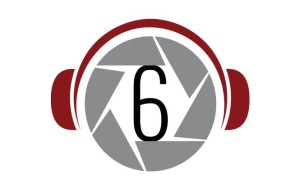The Fat Ass Chronicles Part 3 – We're Here to Pump You Up
9 min readHere we are, almost a month into the New Year. While this is the final installment of the Fat Ass Chronicles, all your hard work has truly just begun. We began this series with the topic of burning fat through exercise followed by the importance of a healthy diet. Last, and believe me, it is so not least, is weight training. As mentioned in previous articles, you can lose fat by diet or cardio alone, but for maximum benefit, include weight training in the mix.
By increasing one’s lean body mass (how much muscle you are made of), you increase your metabolism. So imagine Joe Blow, who is in great shape, sitting in his cubicle alongside Timmy, who never works out, does not eat right, and generally speaking is out of shape. While Joe can burn 50 calories just while sitting in his chair for an hour, Timmy only burns 40 calories during that same hour. Why is that? Since muscle is a metabolically active tissue, it burns fat – the more muscle you have, the more you have the potential to burn. Lifting weights will increase your resting metabolic rate.
When lifting weights, for the most part, you are not burning fat; rather you are burning sugar stores in your body. Any fat burning that occurs as a result of weight lifting is primarily due to the rise in BMR (basal metabolic rate).
I will use a Q & A format in order to address some common questions and misconceptions about weight lifting.
If I stop lifting weights, won’t the muscle turn into fat?
Not at all. In fact, it is impossible. Muscles can shrink and get smaller, also known as atrophy, but they cannot (magically or otherwise) turn into fat since fat and muscle are different types of tissue. Ever see a former jock or professional athlete who used to be ripped and is now carrying some extra poundage? It is not because the muscle turned into fat but because a lack of activity caused a decrease in caloric burning per day, thereby running a high calorie surplus (likely because they continued with the same diet), and the body stores that surplus as fat.
I do not want to get too bulky, should I lift weights?
Ha ha. Stop it. No really. Do not worry about it. Gaining muscle mass is harder than you might think. Bodybuilders take steroids for a reason, as muscle does not start to pile on after you lift some weights for a couple weeks or months.
How often should I lift weights during each work out?
The longest one should lift weights is around the one hour mark, but for the typical person who has only limited amounts of energy to spend, 45 minutes should be optimal in strength training duration. There are some hormones in your body, such as cortisol, which actually break down muscle. If you push yourself too hard, hormones such as cortisol can be released in your system and actually produce the exact opposite effect for which you are looking. This is called over training. Do not over train. No cookie.
Okay, so you are telling me that I should do cardio at least once a day, and also weights once a day?
Sure am. You love me! Joking aside, there are people who do the cardio and the weights during the same work out session. You can do this if you think you are some sort of badass, but please listen to reason and my advice: Do the exercises separately. Best way to accomplish this is to get your cardio out of the way in the morning and then do your weight training in the afternoon or evening. The main reason is because you will have more energy to do each workout individually rather than try to get them both in at the same time. Your energy levels are going to suffer for whichever workout you do second. Another reason is this will minimize any possibility of over training.
How many times a week should I lift weights?
This all depends on what your previous experience is in weight lifting. Some people have been in and out of gyms over the years while others have not lifted a barbell in their entire life. Beginners should probably start out doing weights about three times a week, about every other day. The intermediate level is three to four times a week, and then your advanced level is five times a week, one body section each day. Do not be stupid and try to lift weights for an hour and a half five days a week right out of the gate. Know your body. Understand your body. Listen to your body.
How many sets of each exercise should I do?
There are a lot of different ways to go about this and many different routines one could do, but, for most people, I believe doing three sets is what you should gun for. Keep in mind, if you are a beginner and have never lifted weights, do one set of each exercise your first week, then two sets the second week, and by the third week you should be able to do three sets.
How many reps of each exercise should I do?
This can get a little tricky and deserves elaboration. The answer to this question depends upon what you are looking to accomplish. If you want to gain strength, use heavier weights, three to five reps per set. If you are looking for muscle development and fat loss, I would recommend performing anywhere from six to twelve reps during each set.
Furthermore, there is a rule that must also be followed regarding how much weight you should be lifting during each exercise. If you cannot do at least five or six reps on an exercise, the weight is probably too heavy for you, so lighten it up jack! To contrast, if you can do ten to twelve reps with absolute ease, then you do not have enough weight on there and you should step it up a notch or two. This is how you know when you need to increase your weight. Do not stick around and do something easy – push yourself and make gains. Every workout, try to do something extra that builds on the last workout, even if it is just an extra rep of each exercise.
How long should I rest between sets?
This depends on which muscle group you are working. Listen to your body and it will tell you how long you need. Generally speaking, one minute between sets should be sufficient, with the exception of weight exercises involving your legs and back. These will take the wind out of you more than other exercises and might require a 90 to 120 second resting period. That period will go by faster than you think, especially when you are silently cursing the last set that hurt like a mother.
At what speed should I lower and lift my weights?
Proper technique pwns number of reps. The most important thing is to always maintain control of what you are doing and, in most cases, that means you are going to be doing your lifting and lowering at a slow pace. At least it is closer to slow than to fast and explosive. The whole point is to put stress and weight on your muscles, so give them time to take that weight and work with it. As a general rule, take a couple seconds to lift the weight and then three to four seconds to lower it properly for you to lift it again. Repeat.
How much time should I give myself before I work a specific body part again?
First, understand that muscle does not grow while you are working it in the gym but after it recovers from the hell through which you just put it (providing you are eating a healthy diet in addition to your weights). It tears (microscopically) and then recovers. Give your muscle groups three to four days before you even consider working that specific area again. If you are still extremely sore, do not work that muscle area again until a lot of that soreness has subsided, as you do not want to injure yourself. Range of motion is another good indicator. If you have full range of motion, you should be good to go.
A sample set of weight exercises (an exercise from each body part) is listed below and should not be done all in the same workout, as they cover everything, but merely as an example of a beginner’s workout that you can piece together. You should be able to accomplish them if you spread them out over three non-consecutive days a week in 45 minutes to an hour each session:
1. Dumbbell side lateral raise (works the shoulder area)
2. Bench press with dumbbells, barbells or machine (works your chest)
3. Dumbbell bicep curl (works the biceps)
4. Dumbbell behind the head extension (works the triceps – DO NOT neglect your triceps, they are the biggest muscle in your arms, not the bicep)
5. Lat machine pull down (works your upper back)
6. Leg extensions (works your upper legs/ thigh area)
7. Calf raises (works your calves)
8. Lying (stomach) leg curls (works the hamstrings in your legs)
9. Crunches (works your abs)
There are many other options in working out – literally, hundreds of different exercises you can be doing. If you are on the beginner’s workout, you can group your body into three sections and do one section each day (spread out over a week) you lift. For example:
Day 1: Shoulders, biceps, triceps
Day 2: Calves, hamstrings, quads
Day 3: Chest, back, and abs
Each day would consist of about six to nine (depending upon your experience level) total exercises (three sets each), focusing on about two to three exercises per area (shoulders, biceps, triceps). This comes highly recommended as opposed to trying to work every body part in one day, which is not wise at all.
To keep things short and sweet, I am going to list about three different exercises for each body part that you can try yourself (with trainer assistance if necessary and if you are on the fence questioning that, then yes, it is necessary).
Quads: Leg press, Leg Extension, Squats
Hamstrings: Lying Leg Curl, Seated Leg Curl, Hyper Extension
Calves: Standing Calf Raise, Seated Calf Raise, Calf Press
Back: Cable Rows, Pull downs, Barbell Rows
Abs: Crunches, Cable Crunch, Hip Lift
Shoulders: Dumbbell Press, Military Press, Dumbbell Laterals
Chest: Barbell Bench Press, Cable Crossovers, Dumbbell Bench Press
Triceps: Close Grip Bench, Lying Tricep Extension, Tricep Pushdown
Bicep: Preacher Curl, Barbell Curl, Concentration Curl
Forearms: Hammer Curl, Barbell Wrist Curl, Reverse Curl
If you have any question as to the correct technique behind performing these exercises, please seek out a local trainer. Once you have learned proper technique, and have performed them and feel good about it, move your weights routine up to four days a week and, once you get past that, five days a week, where you can focus on just one section of the body per day.
When you work out, make sure your breathing is performed correctly. When you are pressing on your weights, make sure you are breathing out fully, and conversely, when you bring the weight back down, inhale fully. Do not try and hold your breath while you are lifting weights as it is counterproductive and you might make yourself pass out. Your body needs that oxygen, so give it what it needs.
Apply yourselves, work hard, and be proud of your accomplishments. The more you put in, the more you will get out. This is not just a game of the physical. It is just as much a mental thing, if not maybe a little more mental than physical. Without the mental aspect in check, you will have no discipline to take care of the physical. Visualize yourself lifting the weight and break that glass ceiling.







Great job, Mark!
I have a couple of questions. First of all, I have a 15 y/o who needs to gain about 30 pounds for soccer. He’s currently 6’1” and 137. Excellent dimensions for a cyclist, but not for physical contact. I’m having him do 75% of what he can bench 8x, then add 5 lbs and do another 6 reps, and then add 5 more pounds and do that 4x. Is that a good prescription for my boy?
I’m on the other end of that equation. I need to lose about 100 lbs. Obviously cardio and diet are a foregone conclusion. Should I be trying to build power as I described earlier, or should I take the advice of a friend and do light weights, one set until failure.
What do you say to these questions, Marky?